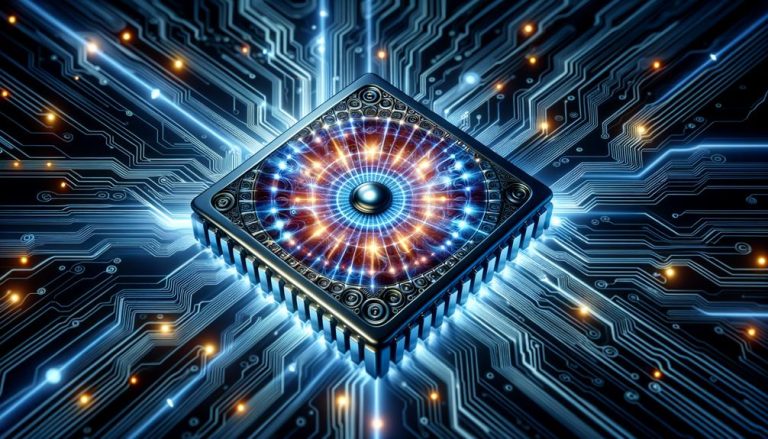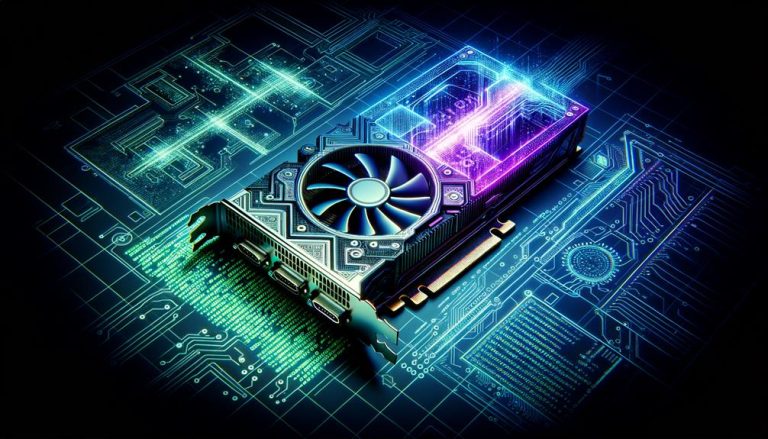Human Activity Recognition (HAR) is a cutting-edge field within computational science and engineering that focuses on identifying and categorizing human actions based on sensor data.
HAR systems have wide-ranging applications in areas such as wellness, healthcare, security, and sports performance.
This article explores the fundamentals of HAR, including data collection and preprocessing, model selection, training, and evaluation.
It also discusses different HAR models, their applications, and the availability of publicly accessible datasets for researchers to utilize in their studies.
Stay tuned for an enlightening exploration of HAR's potential for liberation.
Key Takeaways
- Human Activity Recognition (HAR) is a branch of computational science and engineering that recognizes and categorizes human actions based on sensor data.
- HAR systems are used in various applications such as wellness, healthcare, security, and sports performance.
- HAR involves data collection using sensors like accelerometers, gyroscopes, magnetometers, and GPS sensors.
- Model selection is crucial in HAR, and popular machine learning models include decision trees, support vector machines, random forests, and deep learning models.
HAR Systems in Various Applications
The applications of HAR systems encompass a wide range of industries and sectors, including agriculture. HAR systems have the potential to revolutionize the agricultural sector by enabling farmers to monitor and optimize their farming practices.
By using sensor data, HAR systems can recognize and categorize human activities in agricultural settings, such as planting, watering, harvesting, and operating machinery. This information can provide valuable insights into the efficiency and productivity of farming operations.
However, implementing HAR systems in agriculture comes with its challenges. One of the main challenges is the integration of sensors into existing farming equipment and infrastructure. Additionally, ensuring the accuracy and reliability of HAR systems in dynamic outdoor environments can be a complex task.
Overcoming these challenges will require innovative solutions and collaborations between technology providers and agricultural stakeholders. By leveraging the power of HAR systems, agriculture can become more efficient, sustainable, and productive, leading to a liberated and prosperous future for farmers and the entire industry.
Working of HAR: Data Collection and Preprocessing
Data collection and preprocessing are essential steps in the working of Human Activity Recognition (HAR). This involves the collection of sensor data and the application of various preprocessing techniques.
Data segmentation is a crucial part of this process. It involves dividing the continuous sensor data into smaller segments representing different activities.
These segments are then subjected to feature extraction. This step involves identifying relevant patterns and information from the sensor data. The goal is to capture the essential characteristics of the activities and discard irrelevant details.
Feature extraction helps in reducing the dimensionality of the data and improving the efficiency of the HAR system. By carefully selecting and extracting meaningful features, the HAR system can better classify and predict human activities accurately.
Model Selection in HAR
Model selection is a crucial aspect in Human Activity Recognition (HAR), as it determines the machine learning algorithm or model that will be used to classify and predict human activities based on the collected sensor data. The choice of model can greatly impact the accuracy and performance of the HAR system. There are various machine learning models available for HAR, each with its own advantages and challenges. To provide a comprehensive overview, the following table showcases some popular HAR models:
| Model | Advantages | Challenges |
|---|---|---|
| Decision Trees | Easy to interpret and visualize | Prone to overfitting and lack of generalization |
| Support Vector Machines | Effective for classifying complex activity patterns | Requires careful selection of hyperparameters |
| Random Forests | Improved accuracy through ensemble learning | High computational complexity |
| Deep Learning Models | Ability to learn complex features automatically | Requires large amounts of labeled data |
| Hybrid Models | Combines strengths of different models | Increased complexity and potential integration issues |
The advantages of ensemble models, such as random forests and hybrid models, lie in their ability to combine multiple models to improve accuracy and robustness. However, challenges in model selection include overfitting, hyperparameter tuning, computational complexity, and the need for sufficient labeled data. By carefully considering these factors, researchers and practitioners can select the most appropriate model for their HAR application, ensuring accurate and reliable activity recognition.
Model Training and Evaluation
To ensure accurate and reliable activity recognition, researchers and practitioners in Human Activity Recognition (HAR) must conduct thorough model training and evaluation.
Model training involves using labeled data and algorithms to classify and predict human activities. It is essential to employ feature engineering techniques, such as filtering, feature extraction, and dimensionality reduction, to enhance the performance of HAR models.
After training the models, evaluation is conducted to assess their performance and accuracy. Model performance metrics, such as accuracy, precision, recall, and F1 score, are commonly used to evaluate HAR systems. These metrics provide insights into the model's ability to correctly classify different activities.
Different HAR Models
The selection of machine learning models plays a crucial role in Human Activity Recognition (HAR), as they determine the accuracy and effectiveness of activity classification and prediction. To enhance the performance of HAR systems, researchers have explored various models and algorithms.
Some key considerations in the development of HAR models include:
- Comparative analysis of different machine learning algorithms for HAR: Researchers have compared the performance of decision trees, support vector machines, random forests, and deep learning models like convolutional neural networks. This analysis helps identify the most suitable algorithm for a particular HAR application.
- The impact of sensor placement on the accuracy of HAR models: The placement of sensors on the human body or in the environment can greatly affect the accuracy of HAR models. Experimentation and analysis of different sensor configurations help determine the optimal placement for capturing relevant data.
- Hybrid models: Combining different machine learning algorithms can enhance the performance of HAR systems. Hybrid models leverage the strengths of multiple algorithms to improve accuracy and robustness.
- Transfer learning: This approach involves leveraging pre-trained models from other domains and fine-tuning them for HAR tasks. Transfer learning enables faster model development and improved performance with limited labeled data.
- Ensemble learning: Ensemble models, such as random forests, combine multiple weaker models to achieve better accuracy. This approach helps mitigate individual model biases and improves overall prediction performance.
Hybrid Models for Enhanced Performance
Hybrid models have emerged as a promising approach to enhance the performance of Human Activity Recognition (HAR) systems.
These models combine different machine learning algorithms, such as decision trees, support vector machines, random forests, and deep learning models, to leverage their individual strengths and improve accuracy.
Fusion approaches are used to integrate the outputs of multiple models, resulting in a more robust and reliable HAR system.
The performance comparison of hybrid models against individual models has shown significant improvements in terms of accuracy, precision, and recall.
By combining the strengths of different algorithms, hybrid models can overcome the limitations of individual models and achieve better results in HAR tasks.
This approach opens up new possibilities for enhancing the accuracy and reliability of HAR systems, leading to more effective applications in wellness, healthcare, security, and sports performance.
Applications of HAR in Wellness and Healthcare
One significant application of Human Activity Recognition (HAR) is in wellness and healthcare. It can track physical activity, monitor sleep quality, and assess heart rate through wearable devices.
HAR in healthcare faces challenges in implementation. These challenges include ensuring data privacy, integrating with existing healthcare systems, and addressing the accuracy and reliability of the technology.
Ethical considerations must also be taken into account when using HAR for wellness monitoring. These considerations include issues of consent, data security, and potential biases in the algorithms used.
Despite these challenges, the potential benefits of HAR in wellness and healthcare are immense. By providing real-time monitoring and personalized feedback, HAR can empower individuals to take control of their health and well-being.
This empowerment can lead to improved outcomes and a more liberated approach to healthcare.
HAR in Smart Homes and Personal Safety
HAR in smart homes and personal safety plays a pivotal role in enabling energy-saving measures and ensuring personal comfort through the use of activity recognition technologies. By accurately detecting and categorizing human actions within a home environment, HAR systems can automatically adjust lighting, temperature, and other settings based on human presence. This not only enhances energy efficiency but also provides a personalized and convenient living experience. Additionally, HAR is instrumental in personal safety, where it can be used to automatically alert emergency services or designated contacts in case of an accident or suspicious activity. However, implementing HAR in industrial settings poses certain challenges. These include the need for robust and reliable sensor data collection, privacy concerns, and the integration of HAR systems with existing infrastructure. Overcoming these challenges will be crucial for the widespread adoption of HAR in smart homes and personal safety applications.
| Challenges in HAR Implementation in Industrial Settings |
|---|
| Robust and reliable sensor data collection |
| Privacy concerns |
| Integration with existing infrastructure |
HAR in Sports Performance Analysis
Sports performance analysis benefits greatly from Human Activity Recognition (HAR) by monitoring and enhancing athlete performance through the recognition and categorization of human actions. HAR in sports performance analysis has the potential to revolutionize injury prevention and rehabilitation programs.
Here are five ways HAR can contribute to the field:
- Early detection of movement patterns that may lead to injuries, allowing athletes and coaches to make necessary adjustments.
- Real-time monitoring of athlete movements during rehabilitation exercises to ensure proper form and prevent re-injury.
- Quantitative analysis of performance metrics, such as speed, agility, and power, to identify areas for improvement and optimize training programs.
- Objective evaluation of technique and biomechanics, providing valuable feedback for skill development.
- Integration of HAR data with other performance metrics, such as heart rate and sleep quality, to provide a comprehensive picture of an athlete's overall conditioning and recovery.
Available HAR Datasets
To facilitate research and development in the field of Human Activity Recognition (HAR), numerous publicly available datasets exist, allowing researchers to study and analyze human actions with a high frequency of data collection.
These datasets play a crucial role in advancing HAR technology by providing a foundation for training and evaluating models.
One of the key aspects of these datasets is the importance of data labeling. Labeling involves annotating the collected sensor data with corresponding activity labels, enabling the models to learn and classify different human activities accurately.
However, collecting and labeling HAR data present significant challenges. These challenges include the need for extensive data collection efforts, ensuring data accuracy and consistency, dealing with inter-subject and intra-subject variability, and addressing privacy concerns.
Overcoming these challenges is essential for creating comprehensive and reliable HAR datasets that can drive advancements in this field.
Frequently Asked Questions
How Do HAR Systems Utilize Multi-Modal Learning and Graph-Based Learning to Improve Accuracy and Robustness?
Multi-modal learning and graph-based learning techniques are utilized in HAR systems to improve accuracy and robustness.
Multi-modal learning combines data from different sensors, such as accelerometers and gyroscopes, to capture a more comprehensive understanding of human activities.
Graph-based learning leverages the relationships between activities to enhance the classification process.
These techniques enable the HAR system to better handle variations in sensor data and extract meaningful patterns, resulting in improved performance and robustness in recognizing and categorizing human activities.
What Are Some Popular Algorithms Used for Model Training in Har?
Some popular algorithms used for model training in HAR include:
- Decision trees: These provide a simple and interpretable approach for classifying human activities.
- Support vector machines (SVM): SVMs are effective for accurately classifying human activities.
- Random forests: This algorithm combines multiple decision trees to improve accuracy in HAR models.
- Deep learning models: Deep learning models, such as convolutional neural networks (CNN), have shown promising results in HAR.
Other techniques that can be employed to enhance the performance and robustness of HAR models include:
- Ensemble methods: These methods combine multiple models to improve accuracy and generalize better.
- Feature selection techniques: These techniques help in selecting the most relevant features from the input data, reducing noise and improving model performance.
How Is Model Evaluation Performed in HAR Systems?
Model evaluation in HAR systems is essential to assess the performance and accuracy of the trained models. Various model evaluation techniques and performance metrics are employed for this purpose.
These techniques include cross-validation, where the dataset is divided into training and testing sets, and the model is trained on the training set and evaluated on the testing set.
Performance metrics such as accuracy, precision, recall, and F1 score are used to measure the model's effectiveness in correctly classifying and predicting human activities.
What Are the Advantages of Using Deep Learning Models, Such as Convolutional Neural Networks, in Har?
Deep learning models, such as convolutional neural networks (CNN), offer several advantages in Human Activity Recognition (HAR).
Firstly, CNNs are capable of automatically learning hierarchical representations from raw sensor data, eliminating the need for manual feature engineering.
Secondly, CNNs excel at handling time series data, allowing them to capture temporal dependencies and patterns in human activities.
Lastly, transfer learning techniques can be applied to CNNs, enabling the model to leverage pre-trained knowledge from other domains, improving performance and reducing the need for large labeled datasets.
Can You Provide Examples of Hybrid Models That Have Been Successfully Used in HAR Systems?
Hybrid models in HAR systems combine different machine learning algorithms to enhance performance. For example, a combination of decision trees and support vector machines can capture both local and global patterns in human activities.
Another hybrid approach is the fusion of deep learning models with traditional machine learning algorithms, leveraging the strengths of both methods. These hybrid models have shown improved accuracy and robustness compared to using individual models.
The comparison of traditional and deep learning models in HAR highlights the advantages of incorporating hybrid models for more effective human activity recognition.
Conclusion
In conclusion, Human Activity Recognition (HAR) is a rapidly growing field with applications in various industries such as wellness, healthcare, security, and sports performance.
HAR systems utilize sensor data and machine learning models to recognize and categorize human actions.
The availability of publicly accessible HAR datasets enables researchers to train, evaluate, and benchmark the performance of HAR systems.
With continued advancements in technology and the integration of hybrid models, HAR has the potential to revolutionize how we understand and interact with human activities.




